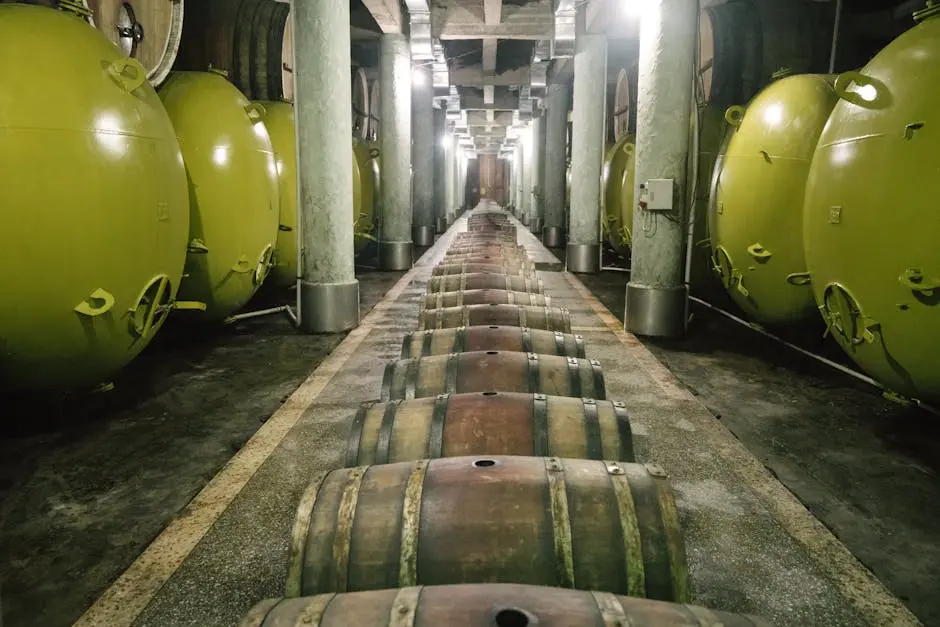Cabernet Sauvignon is a grape variety that has captured the hearts and palates of wine enthusiasts across the globe. Whether you’re a seasoned connoisseur or a casual wine sipper, there’s always something new to learn about this dynamic and popular wine. Here, we dive into some fascinating facts about Cabernet Sauvignon that might just surprise you.
1. The King of Red Grapes
Cabernet Sauvignon is often referred to as the king of red grapes, not only because of its robust flavor and tannic structure but also due to its significant presence in prominent wine-growing regions worldwide. With approximately 95,000 acres planted in the United States alone, it’s clear that Cabernet Sauvignon reigns supreme in the wine world. Its success is not just limited to the popular Napa Valley; from the expansive vineyards of Australia to the sun-kissed terrains of Chile, Cabernet has made its mark. This adaptability makes it a favorite among vintners looking to craft wines that appeal to diverse palates — whether bold or subtly nuanced.
2. A True Bordeaux Classic
Originating from the renowned Bordeaux region of France, Cabernet Sauvignon is a key component in many of the world’s most esteemed red wine blends. Bordeaux wines typically exhibit a balance of herbal and floral flavors like violets and graphite, intertwined with the richer notes of black cherries and licorice. This harmonious complexity is attributed to the skillful blending of Cabernet with other varietals such as Merlot and Cabernet Franc, creating wines that are both elegant and structured. The mastery of blending in Bordeaux not only highlights the intrinsic qualities of Cabernet Sauvignon but elevates it to legendary status in the wine world.
3. A Happy Accidental Crossing
In the seventeenth century, a chance crossing between Cabernet Franc and Sauvignon Blanc gave birth to this extraordinary grape variety. This genetic pairing was serendipitous, as it combined the hardy tannins and robust flavors of Cabernet Franc with the crisp acidity and aromatics of Sauvignon Blanc, offering a grape that brought forth new dimensions in winemaking. Today, this happy accident is celebrated globally, with vineyards cultivating the variety to enhance their wine portfolios. Given its beginnings, Cabernet Sauvignon is an excellent reminder of how fortuitous events in nature can lead to the emergence of something truly magical and enduring.
4. A Global Traveller
Cabernet Sauvignon’s adaptability to different climates and terrains has allowed it to thrive in regions as diverse as California, Australia, Chile, and more. This flexibility means that even when grown in varying conditions, the grape consistently delivers quality wine, managing to express the unique terroir of each region. While California’s climate produces luscious, fruit-forward Cabernets perfect for pairing with grilled meats, Australia’s cooler climates might yield a slightly different profile, highlighting minty or eucalyptus notes. Each region’s distinct take on Cabernet Sauvignon ensures that there’s always something new for wine adventurers to discover.
5. Celebrated for Its Complexity
Renowned for its bold flavors of dark fruit, such as blackcurrant and blackberry, Cabernet Sauvignon often showcases additional notes of mint, eucalyptus, and even tobacco, leading to a complex tasting experience. This complexity is not just a treat for the senses but a conversation starter among wine aficionados. What makes the tasting adventure even more enthralling is how these flavors can further develop with age, transforming the wine’s profile over time. The rich tannins and acidity in Cabernet Sauvignon allow it to cellar well, providing sensory delights and narrative layers with each passing year.
6. Aging Gracefully in Oak
Cabernet Sauvignon is typically aged in oak barrels, which impart additional flavors of vanilla and spice, contributing to the wine’s depth and complexity. The aging process in oak not only softens the potent tannins but enhances the wine’s aromatic bouquet, offering a silky mouthfeel that many wine lovers crave. Both French and American oak barrels are favored for aging Cabernet, with each imparting different nuances — French oak often adding more subtle and elegant flavors, while American oak can introduce bolder vanilla and spice notes. This marriage between oak and wine is a fine example of how tradition and craftsmanship come together to create exceptional expressions of Cabernet Sauvignon.
7. Perfect Pairings
This wine’s full-bodied nature makes it a perfect partner for hearty dishes such as grilled meats, rich stews, and aged cheeses. The savory character of the wine, with its black pepper and tobacco notes, complements the umami found in dishes like roasted lamb or beef wellington, enhancing the dining experience. For cheese lovers, pairing Cabernet Sauvignon with mature hard cheeses like aged Gouda or Cheddar creates a flavor synergy that’s both comforting and sophisticated. This versatility makes Cabernet a staple for dinner parties and celebratory occasions alike, enticing hosts and guests with its gastronomic potential.
8. The Magic of Terroir
The concept of terroir plays a significant role in the characteristics of Cabernet Sauvignon, with subtle differences in soil, climate, and vine age influencing its taste. Vineyards in rocky, nutrient-poor soils may stress vines, leading to grapes with more concentrated flavors and firmer tannins, which are ideal for aging. Conversely, grapes from richer soils might yield fruitier, more approachable wines. Climate also subtly influences the grape’s characteristics; a cooler climate might emphasize herbal elements, whereas a warmer one enhances the fruit-forward nature of the grape. These nuanced differences provide a tantalizing exploration for wine enthusiasts determined to understand the impact of terroir on Cabernet Sauvignon’s renowned depth and diversity.



